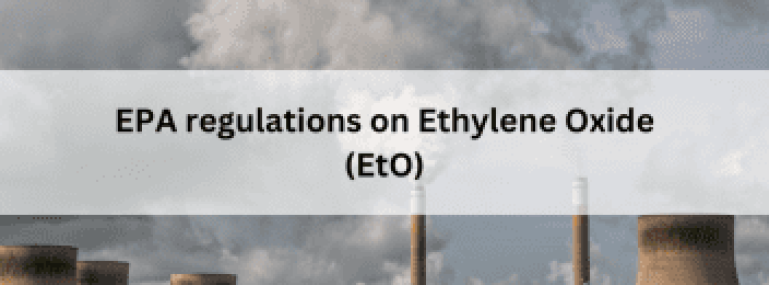The Environmental Protection Agency (EPA) has been working to regulate the emission of ethylene oxide (EtO) to protect public health and the environment. A highly reactive and flammable gas, EtO is used in the production of medical equipment, plastics, and textiles. Although it is an essential component of manufacturing, it has been identified as a carcinogen, making it a significant concern for environmental regulators.
In the US, EPA proposes to regulate EtO emissions due to a number of reasons. According to the Environmental Protection Agency (EPA):
- It wasn’t until recently that the EPA updated the standards to reflect the latest scientific research on EtO’s health effects that it began regulating EtO emissions in the 1980s. EPA has issued new regulations governing EtO emissions in 2020, which have tightened the limits on emissions from sterilization facilities as well as other sources because of the regulation.
- As a result of the new regulations, communities near facilities that use EtO will be protected and the risk of cancer from prolonged exposure to the gas will be reduced. It is essential that the EPA regulates ethylene oxide emissions since they can cause respiratory problems, nausea, headaches, and other health issues.
- The implementation of updated regulations for EtO emissions has proven challenging for industries that use gas. Complying with regulations requires significant changes to production processes, which can be time-consuming and costly. Finding an alternative to EtO can also be challenging, especially if the alternative does not provide the same quality or functionality.
- However, reducing EtO emissions will have substantial long-term benefits, making changes necessary. For industries emitting EtO, collaboration with the EPA is crucial for finding solutions that meet business needs while meeting environmental regulations
- As the EPA updates its regulations, industries must stay informed and adapt to the new To protect public health and the environment, EtO emissions must be monitored and regulated continuously.
The industries that may be affected by EPA regulation on Ethylene Oxide (EtO):
- Medicinal and pharmaceutical industries: EtO is an excellent sanitizer for clinical hardware and drugs that cannot be exposed to high temperatures or dampness. Medical devices such as catheters and sutures, as well as surgical instruments, are included in this category.
- Chemical industry: EtO is made by converting it as a precursor to ethylene glycol. This is used to make antifreeze, polyester fibers, and plastic bottles. It is also used to manufacture synthetics, like surfactants, cleansers, and glues.
- Agriculture: Apart from that, EtO can also be applied to some agricultural products that are susceptible to pests, fungi, or bacteria growth, such as grains and spices, to prevent the growth of insects, fungi, etc.
- Food packaging: Despite being less common, EtO can also be used to sterilize some food packaging materials. The term EtO is also used to describe a carcinogenic substance. Long-term use can lead to cancers like lymphomas and leukemia. Excessive use of this drug can also lead to headaches, breathing problems, dizziness, etc.
The EPA has developed guidelines for risk management procedures to ensure the safety of environment, and consumers from the toxic emissions. Although it is imperative for manufacturing industries to be compliant, they struggle to meet both environmental and business needs. ComplianceXL helps organizations comply with environmental policies, reduce the social impact, and contribute to a healthier world by minimizing EtO emissions. Find out how this under regulation on EtO emissions affects you and what you need to do to stay compliant today by contacting an ESG Specialist.
FAQs:
1. How does the EPA warn about ethylene oxide?
An analysis by the Environmental Protection Agency showed that ethylene oxide (EtO) emissions from some commercial sterilizers contribute to elevated cancer risk.
2. How does EPA determine what is an acceptable risk?
An organization’s OH&S policy and legal obligations have been taken into consideration when reducing risk.





